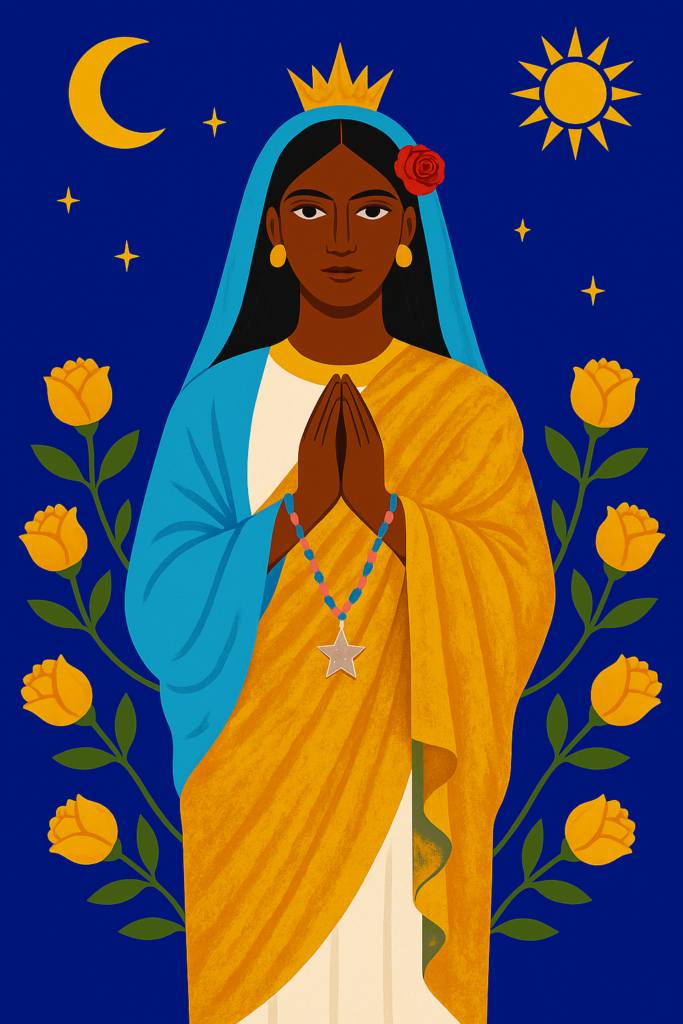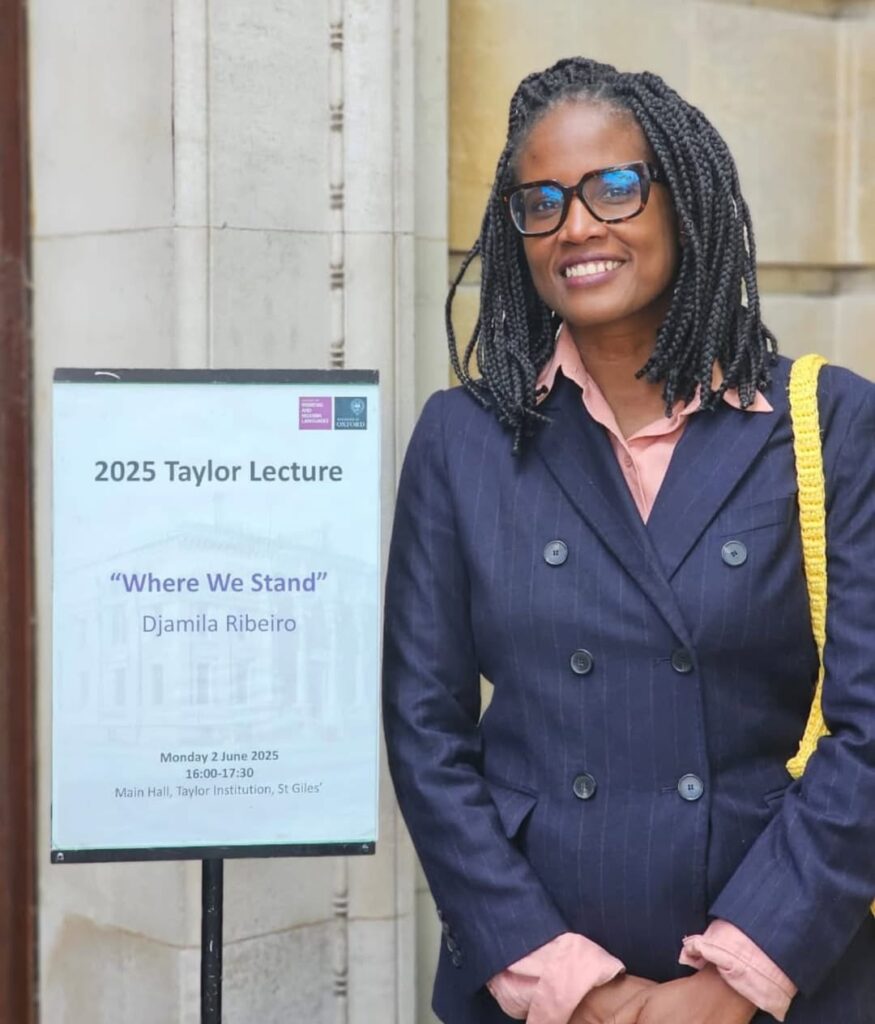Saint Sara Kali, a Figure Revered Across Religions

Faith and resistance of the Romani people have preserved her worship and celebrations for centuries
On May 24, I attended the festival of Saint Sara Kali, held in Morro da Nova Cintra, in Santos, my hometown. I was accompanied by Nina Barbosa, Secretary of Women, Citizenship, Diversity, and Human Rights of the city, and I rejoiced with the Romani people, immersed myself in their dances, and revisited memories from the past that still live in me.
Saint Sara is a highly celebrated figure among devotees of various religions, but it is the faith and resistance of the Romani people that have preserved her worship over the centuries. Many stories surround her origin. One of the most widespread legends says that Sara Kali was a servant of Mary Magdalene, and that they were cast together into the Mediterranean, facing dangers that made death seem certain.
A promise made by Sara is said to have ensured the women’s salvation, and their arrival in the south of France, in Saintes-Maries-de-la-Mer, became one of her best-known miracles. To this day, May 24 is a day of pilgrimage to the French town.
Born in Egypt, the saint traveled the world—just like her devoted people. “Kali” in Sanskrit would mean “black,” and some associate her name with the Hindu goddess of the same name, who has deep influence among Romani groups. Even without formal canonization, Saint Sara is the patron saint of the Romani people and is venerated by women seeking fertility. A holy woman: Black, rejected and adored, a wanderer and a survivor.
At Unidos dos Morros’ samba school, where agogôs rest at that time of year, the space transforms to host the celebration. The warehouse opens up to flowing dresses and dances of ancient times. At the entrance, booths displayed colorful clothes, strong incense, and tarot cards of all kinds. Jesus Christ, Oxóssi, Kali, Lord Ganesha, and an entire pantheon of deities shared space in the celebration’s small marketplace.
We blended into the crowd following the ceremonies and watched the dances, interspersed with resistance speeches led by Romani women. Members of the Black Community Council of Santos were present—where the Romani people hold a seat—as well as other local authorities.
In the background, an altar with fruits, flowers, and bread was arranged for Saint Sara. She watched us from there, majestic, adorned with necklaces and candlelight. That image, before a diverse population of multiple beliefs and origins, touched me deeply.
It had been 20 years since I was last there. At that time, young and unaware that I was pregnant, I was seen by a Romani woman. She held my hand, looked into my eyes, and firmly said, “You are pregnant with a girl, and she will be your great friend.” Thulane, my daughter—whose existence I didn’t yet know—became exactly that: my life companion. The memory of that encounter has stayed with me for two decades.
Upstairs, in the school’s VIP area, fortune-tellers occupied their tables. Women with intense eyes and vibrant scarves welcomed long lines of people seeking guidance. I was struck by the image of a Romani woman shuffling her cards before a woman deep in prayer. A question had been asked there, and the mystery, presence, and spiritual peace of the consultation revealed the strength of Romani tradition.
At the end of the evening, I walked to Saint Sara’s grotto. More fruits, seeds, and flowers. It reminded me of the Pachamama ritual I joined years ago in rural Argentina. People lined up to leave offerings with faith. I lit my candle, asked for protection, and gave thanks. The image of the Black-skinned saint was covered in necklaces, and the scent of candles lingered in the air. There was a profound peace there, hard to describe.
The Romani people fought for years to build that prayer space. Today, with the grotto in place, they dream of a chapel in Saint Sara Kali Square. Isn’t that how chapels begin? An annual festival on the city’s official calendar, with a sacred place for offerings and celebrations, gives Santos a unique opportunity to become a territory that honors Romani spirituality and all who admire it.
In times of growing religious intolerance, remembering Saint Sara is also a political gesture. She represents all those who were silenced but continue to speak through dreams, visions, and dances. As I walked down the hill that night, I realized that some memories never fade. They only wait for the right moment to return.
Optchá!
Related articles

June 7, 2025
Professor Djamila Ribeiro brings Black literature and place of speech to Oxford, London, and the Hay Festival

December 21, 2022
Djamila Ribeiro launches new website

December 21, 2022
Djamila Ribeiro is on the cover of Forbes Life

